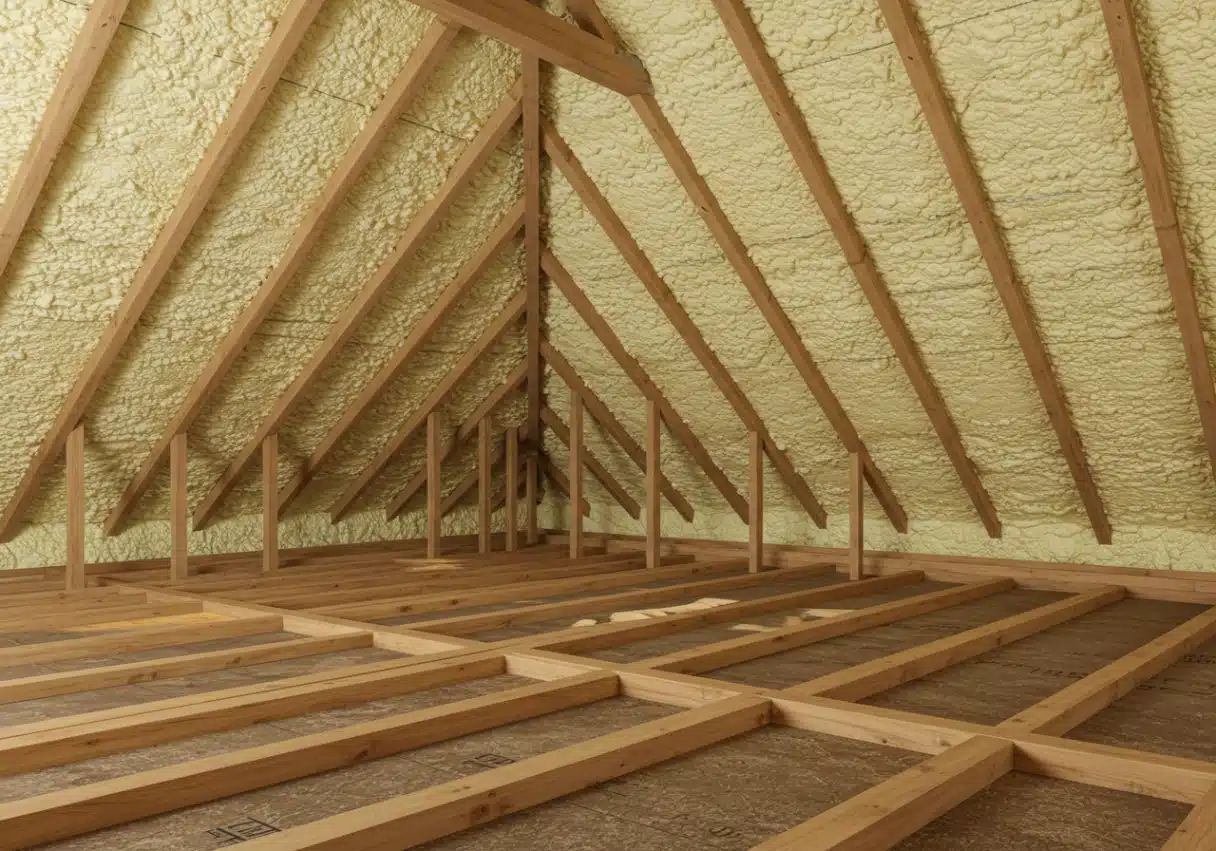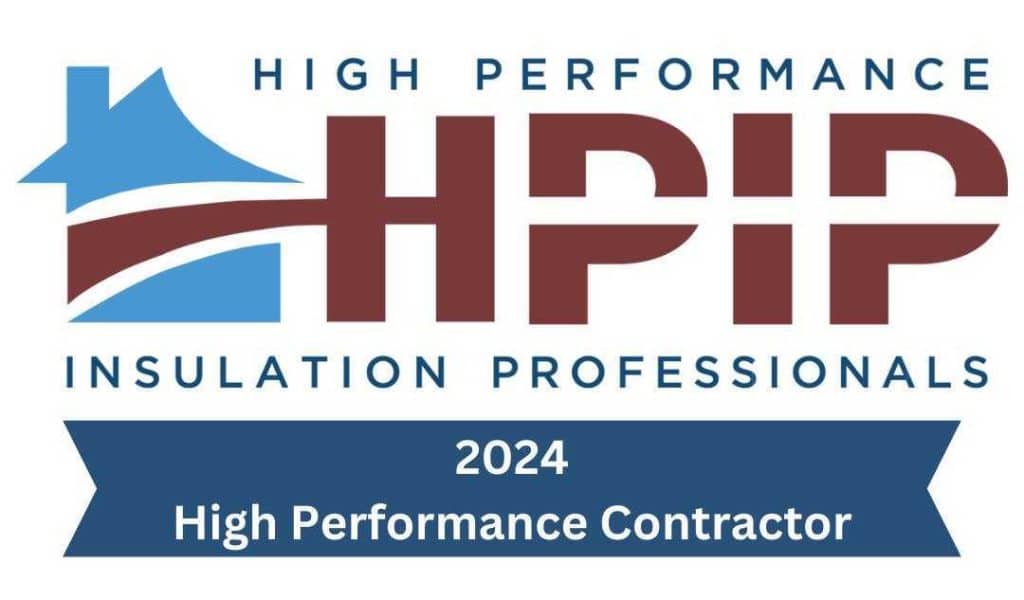The ideal R-value for attic insulation depends on the U.S. Department of Energy’s recommended levels for each climate zone. For attics, the general recommendation ranges from R-30 in warmer climates to R-60 in colder regions. These values reflect the insulation’s ability to resist heat flow, with higher numbers offering better thermal resistance.
In Georgia (Zone 3), for example, attics should be insulated to between R-30 and R-60, depending on whether existing insulation is present. Homes with minimal or no attic insulation benefit most from higher R-values. Blown-in fiberglass or cellulose, spray foam, and batt insulation are all viable materials for meeting these targets.
This guide explains how R-values align with regional requirements, compares insulation types, and includes expert recommendations based on on-site insulation experience across varied residential settings.
Recommended R-Values by U.S. Climate Zone
The table below outlines the Department of Energy’s suggested attic R-values by climate zone:
| Climate Zone | Recommended R-Value (Attic) | States/Regions Covered |
|---|---|---|
| Zone 1 | R-30 to R-49 | Southern Florida |
| Zone 2 | R-30 to R-60 | Central Florida, Southern Texas |
| Zone 3 | R-30 to R-60 | Georgia, Alabama, South Carolina |
| Zone 4 | R-38 to R-60 | North Carolina, Northern California, Mid-Atlantic |
| Zone 5 | R-49 to R-60 | Midwest (e.g., Illinois, Ohio), parts of New England |
| Zone 6 | R-49 to R-60 | Northern Midwest, parts of New York |
| Zone 7 | R-49 to R-60 | Northern Minnesota, North Dakota |
| Zone 8 | R-49 to R-60 | Alaska |
Comparison of Attic Insulation Types
| Insulation Type | Material | Typical R-Value Per Inch | Best For | Moisture Resistance | Air Sealing Capability |
|---|---|---|---|---|---|
| Blown-In Fiberglass | Glass fibers | R-2.2 to R-2.7 | Attics with irregular joists | Low | Low |
| Blown-In Cellulose | Recycled paper fibers | R-3.2 to R-3.8 | Deeper coverage, eco-friendly | Moderate | Moderate |
| Spray Foam (Closed) | Polyurethane | R-6.0 to R-7.0 | Air sealing + high R-value | High | High |
| Batt Insulation | Fiberglass or mineral wool | R-3.1 to R-4.3 | Standard joist spacing | Low to Moderate | Low |
Bonus Tip: Spray foam performs well in humid climates due to its high moisture resistance and sealing ability, making it suitable for southern regions like Georgia.
Technical Specifications by Insulation Type
| Type | Density (lbs/ft³) | Fire Resistance | Installation Complexity | Lifespan (Years) |
|---|---|---|---|---|
| Blown-In Fiberglass | ~0.5 | Moderate | Easy | 20-30 |
| Blown-In Cellulose | ~1.5 | High (treated) | Moderate | 20-30 |
| Spray Foam (Closed Cell) | ~2.0 | High | Complex | 30-50 |
| Batt Insulation | ~0.5 | Moderate | Easy | 15-30 |

Regional Performance Insights
In warmer climates (Zones 1–3), radiant heat is a dominant factor. Fiberglass and cellulose often suffice when installed at R-38 or above. In humid areas, closed-cell spray foam is preferred due to its moisture resistance and air sealing properties.
In colder climates (Zones 5–8), achieving R-49 to R-60 typically requires thicker layers or a combination of batt and blown-in insulation. These regions benefit most from materials that minimize heat loss and air leakage.
Bonus Tip: Combining batt insulation over spray foam (flash-and-batt system) delivers both high R-value and reduced air infiltration in colder areas.
Things to Consider Before Making a Decision
- Existing Insulation: Evaluate current insulation levels to determine if full replacement or top-up is required.
- Ventilation and Moisture Control: Improper air flow or high humidity can degrade insulation performance.
- Access Limitations: Blown-in insulation works well in tight spaces; batts may not fit irregular cavities.
- Installation Cost vs Performance: Spray foam costs more upfront but offers better long-term air sealing.
- Fire Rating and Safety: Cellulose is treated for fire resistance. Spray foam must meet code compliance.
Services Relevant to Attic Insulation Needs
Makeover Insulation provides several insulation services aligned with attic requirements:
- Blown-In Insulation: Offers full coverage for attics using fiberglass or cellulose materials.
- Spray Foam Insulation: High-performance sealing and thermal barrier for attic decks.
- Batt Insulation: Fits standard joists; suitable for accessible attic layouts.
- Insulation Removal: Safe extraction of old or damaged materials before new installation.
Common Questions
How much insulation should I add if I already have some?
Add enough to reach the target R-value for your zone. For example, in Zone 3, top up existing R-19 to reach R-38–R-49.
What’s the most cost-effective insulation for an attic?
Blown-in fiberglass is the most economical in terms of upfront cost and ease of installation.
Does attic insulation reduce energy bills?
Yes. According to Energy Star, proper attic insulation can lower heating and cooling costs by up to 15% (Source: EnergyStar.gov)
Can I install insulation myself?
DIY is possible for batt and blown-in types. Spray foam requires licensed installers due to safety and code standards.
Get Expert Insulation Guidance
Makeover Insulation helps homeowners choose the right attic insulation based on regional climate and structural design. Contact the team for expert advice and professional installation.
Phone: (470) 664-5300 Email: [email protected]
FAQ
How often should attic insulation be replaced?
Every 20–30 years, or sooner if damaged by pests, moisture, or settling.
What are signs my attic insulation needs upgrading?
Uneven indoor temperatures, high energy bills, or visible gaps indicate insufficient insulation.
Is higher R-value always better?
Only up to the recommended level. Going beyond R-60 typically delivers diminishing returns.
How does attic insulation affect HVAC performance?
Proper insulation reduces HVAC load, improving efficiency and extending system lifespan.
Should I insulate the attic roof or floor?
Insulate the attic floor for conditioned living spaces. Roof deck insulation is better for unvented or cathedral-style attics.




